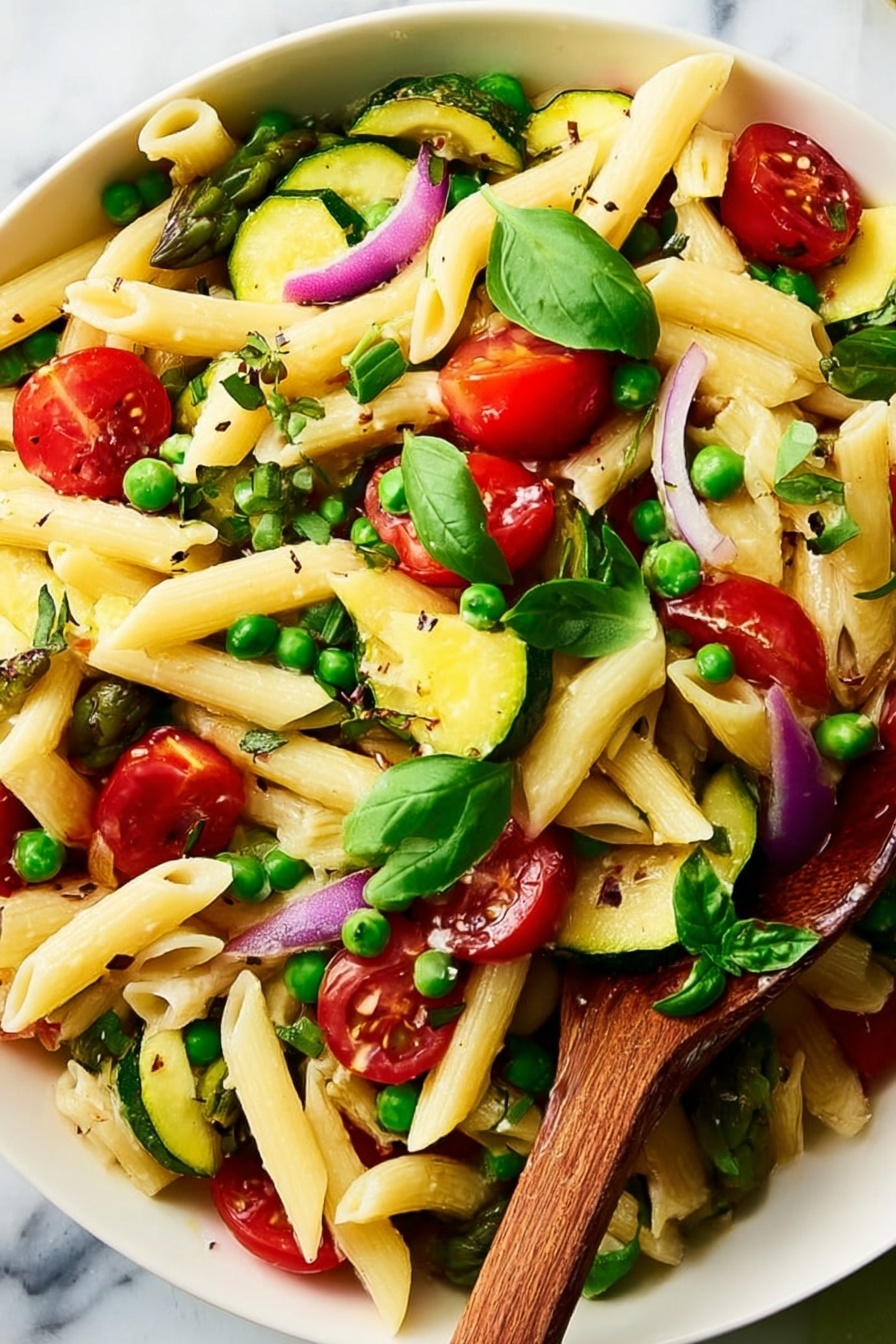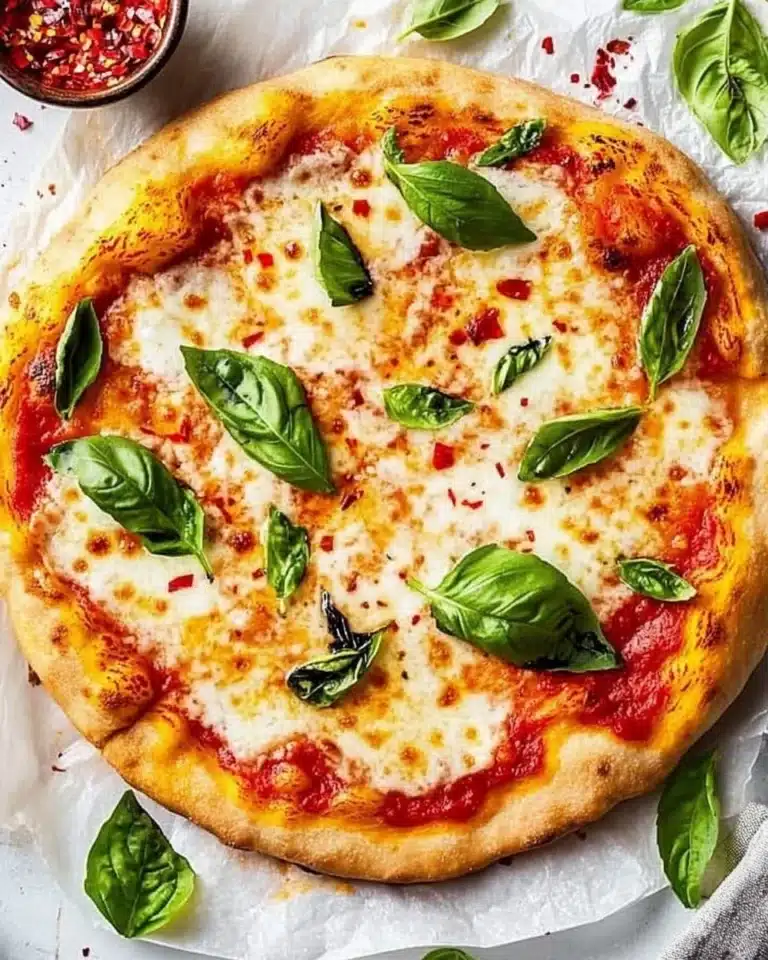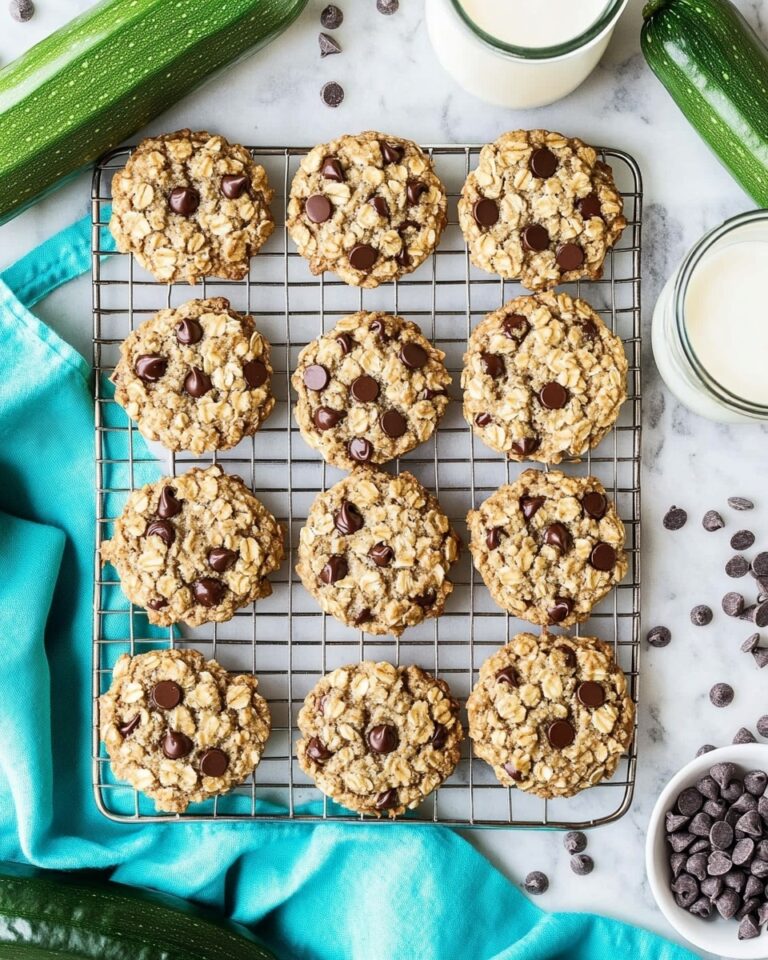If you’re craving a dish that’s bursting with fresh, vibrant flavors and just screams spring and summer, you’re going to love this Fresh Pasta Primavera with Vegetables Recipe. It’s bright, colorful, and incredibly satisfying without feeling heavy. I absolutely love how this turns out—every bite is a celebration of fresh veggies tossed with tender pasta and zesty lemon, all finished with fragrant herbs and pecorino cheese. Trust me, once you try this, it’ll become a go-to in your kitchen, especially when you want a quick, wholesome, and delicious meal.
Why You’ll Love This Recipe
- Bursting with Freshness: This recipe highlights seasonal veggies that add natural sweetness and crunch.
- Quick & Easy: Ready in under 30 minutes, perfect for busy weeknights without sacrificing flavor.
- Customizable: Swap in your favorite veggies or herbs to make it your own.
- Family Favorite: My family goes crazy for this dish, and everyone asks for seconds!
Ingredients You’ll Need
Every ingredient here plays a key role in building layers of flavor and texture. I find that picking the freshest vegetables you can get makes all the difference. Plus, the combination of zucchini, asparagus, and cherry tomatoes really gives that classic primavera vibe.
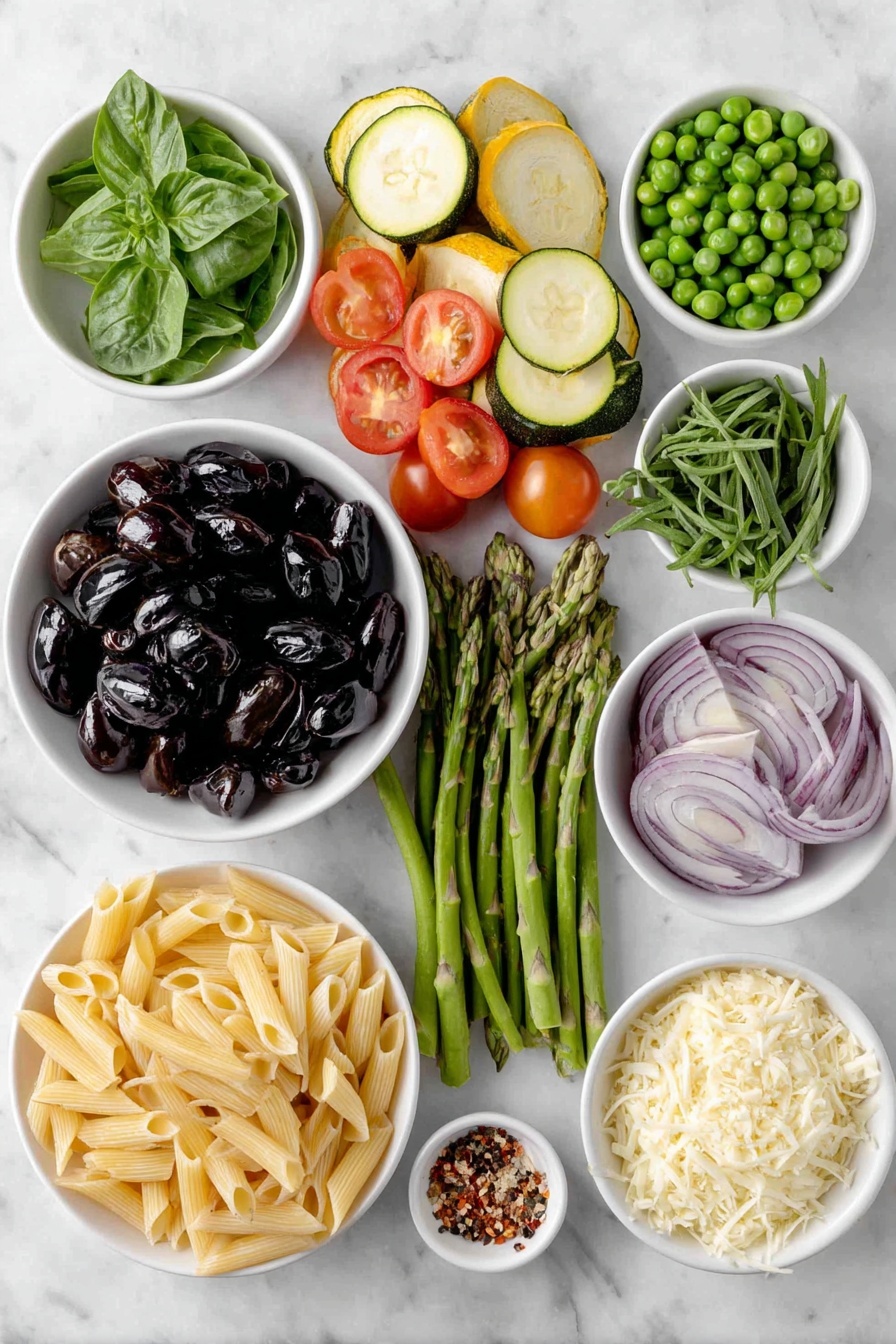
- Penne pasta: I use penne because its shape holds the sauce and veggies perfectly, but feel free to use any pasta you love.
- Extra-virgin olive oil: Use a good-quality olive oil for sautéing – it adds richness and depth to the veggies.
- Garlic cloves: Fresh garlic is a must—it flavors the oil and veggies wonderfully.
- Yellow squash and zucchini: These tender summer vegetables cook quickly and add subtle sweetness.
- Asparagus: Chop into bite-sized pieces for a nice snap and a slightly grassy note.
- Cherry tomatoes: Halved—they burst with juiciness, adding a refreshing tang.
- Red onion: Thinly sliced to soften and bring mild sweetness during sautéing.
- Sea salt: Enhances the natural flavors of all the ingredients.
- Frozen peas: Thawed peas give pops of color and sweetness; fresh peas work great too if you have them.
- Pecorino cheese: I love its salty, tangy flavor that perfectly complements the lemon and veggies.
- Fresh lemon juice: A few tablespoons brighten everything up and add that essential zing.
- Red pepper flakes: Just a pinch for gentle heat—optional but highly recommended.
- Fresh basil leaves: Basil brings a lovely herbal freshness that’s key to primavera dishes.
- Fresh tarragon: Optional, but I swear by it—adds an elegant, slightly anise-like flavor that elevates the whole dish.
- Freshly ground black pepper: Adds a final spicy kick and rounds out the seasonings.
Variations
I love that this Fresh Pasta Primavera with Vegetables Recipe is so flexible—feel free to experiment and make it your own! I’ve tried a few variations over time, and honestly, you can’t go wrong. Adding your favorite seasonal veggies or swapping herbs can bring a whole new life to the dish.
- Swap the pasta: Sometimes I like using farfalle or fusilli—they hold the sauce and veggies just as well and add a little visual interest.
- Different veggies: Bell peppers, snap peas, or even broccoli florets work wonderfully if you want to mix it up.
- Herb variations: I’ve replaced tarragon with fresh thyme or oregano when I didn’t have it on hand, and it still tasted great.
- Make it vegan: Skip the pecorino and toss in some toasted pine nuts or nutritional yeast for that cheesy flavor.
How to Make Fresh Pasta Primavera with Vegetables Recipe
Step 1: Cook the Pasta Perfectly
Bring a large pot of salted water to a rolling boil. Cooking the pasta al dente is key here—you want it tender but still slightly firm to the bite, so it stands up well to the veggie medley. Follow the package instructions but taste a minute or two early just to be sure. Once it’s done, drain it and toss with a drizzle of olive oil right away to prevent it from sticking together. I always do this step while I start cooking the vegetables to save time.
Step 2: Sauté the Vegetables with Garlic
Heat 2 tablespoons of extra-virgin olive oil in a large, deep skillet over medium heat. Once shimmering, add the sliced garlic and let it gently infuse the oil for about 1 minute—don’t let it burn or the flavor turns bitter. Toss in the squash, zucchini, asparagus, cherry tomatoes, and red onion. Season with sea salt and a few grinds of freshly cracked black pepper. Sauté for about 3 to 4 minutes or until the vegetables begin to soften but still have a nice snap and color. This quick sauté keeps the veggies vibrant and fresh-tasting, which I adore.
Step 3: Combine Pasta and Flavorings
Next, add the cooked pasta back into the skillet with the sautéed vegetables. Toss in the thawed peas, grated pecorino cheese, and fresh lemon juice. Don’t forget a pinch of red pepper flakes here—trust me, it adds a lovely, subtle heat. Give everything a good toss so that the cheese melts slightly and the lemon juice brightens all the flavors. Finally, fold in the fresh basil leaves and tarragon, if you’re using it. This last step raises the dish to another level with fresh herb aroma and complexity.
Step 4: Taste and Adjust Seasonings
Give everything a final taste and adjust with salt, pepper, or a splash more lemon juice if you want extra zing. I usually add a little drizzle of olive oil on top before serving to keep it silky and luscious. Garnish with extra basil leaves – they add a lovely fresh pop of color and aroma. Then, dig in!
Pro Tips for Making Fresh Pasta Primavera with Vegetables Recipe
- Don’t Overcook the Veggies: I’ve learned that keeping the vegetables just tender-crisp keeps this dish bright and fresh instead of mushy.
- Use Fresh Lemon Juice: Bottled lemon juice lacks vibrancy—fresh-squeezed always enhances the brightness of this recipe.
- Toss Pasta with Oil Immediately: This simple step prevents clumping and makes sauteing with veggies much easier.
- Add Cheese Last: Adding pecorino at the end helps it melt gently into the dish without clumping or drying out.
How to Serve Fresh Pasta Primavera with Vegetables Recipe

Garnishes
I personally love to finish this dish with a few garnishes that amp up the fresh vibes. A handful of extra fresh basil leaves on top adds that signature herbal aroma. Sometimes, I add a light sprinkle of extra pecorino cheese for more savory depth. A quick grind of black pepper and a tiny drizzle of good olive oil really bring it all together. If you like a little crunch, toasted pine nuts or slivered almonds work beautifully.
Side Dishes
This pasta primavera holds up well on its own, but I like pairing it with a crisp green salad dressed in lemon vinaigrette or some lightly toasted garlic bread to sop up the leftover juices. A chilled glass of white wine, like Pinot Grigio, is my go-to drink to match the light, fresh flavors.
Creative Ways to Present
For special occasions, I love plating the pasta in individual bowls and topping each serving with a fresh herb bouquet—think basil, tarragon, or even edible flowers for a pop of color. Another fun idea is layering the pasta primavera inside hollowed-out roasted peppers or zucchini boats for a stunning presentation that doubles as a vase for the pasta.
Make Ahead and Storage
Storing Leftovers
I usually store leftovers in an airtight container in the fridge for up to 2 days. Since the veggies are tender, the texture holds up pretty well. To keep the pasta from drying out, a small drizzle of olive oil before sealing helps maintain moisture.
Freezing
I generally avoid freezing this dish because the fresh vegetables and delicate herbs can lose their texture and flavor when thawed. However, if you must freeze, I recommend keeping the pasta and veggies separate from any cheese or lemon-based components to preserve quality.
Reheating
The best way I’ve found to reheat leftovers is gently warming them in a skillet over low heat with a splash of water or olive oil to loosen things up. This keeps the pasta from drying out and revives the veggies’ delicate texture. Microwave works in a pinch but can make the pasta a bit mushy.
FAQs
-
Can I use other types of pasta for Fresh Pasta Primavera with Vegetables Recipe?
Absolutely! While penne works great, you can use farfalle, fusilli, spaghetti, or any pasta shape you prefer. Just adjust the cooking time according to the pasta type, and the dish will still taste amazing.
-
Is this recipe suitable for a vegan diet?
Yes, with a few swaps. Simply omit the pecorino cheese or use a plant-based alternative. You can also add toasted nuts or nutritional yeast to give that cheesy flavor punch without dairy.
-
What’s the best way to keep the vegetables vibrant and crisp?
Keep the sautéing time short—about 3 to 4 minutes—and cook over medium heat without overcrowding the pan. This preserves the veggies’ natural colors and slight crunch, which is essential for a fresh primavera feel.
-
Can I prepare parts of this recipe ahead of time?
You can cook the pasta a few hours in advance and toss it with olive oil. Veggies are best cooked fresh, but you can prep your chopping ahead to save time right before cooking.
Final Thoughts
This Fresh Pasta Primavera with Vegetables Recipe really feels like a breath of fresh air every time I make it. It’s so easy, so bright, and packed with flavor—it’s impossible not to feel good eating it. Whether it’s a quick weeknight dinner or a casual weekend lunch, it always hits the spot. I can’t wait for you to try it and see how easy it is to bring vibrant, delicious veggies into your pasta bowl. Your kitchen (and your taste buds) will thank you!
Print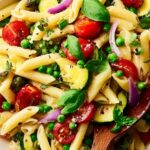
Fresh Pasta Primavera with Vegetables Recipe
- Prep Time: 10 minutes
- Cook Time: 20 minutes
- Total Time: 30 minutes
- Yield: 4 servings
- Category: Main Course
- Method: Stovetop
- Cuisine: Italian
- Diet: Vegetarian
Description
Pasta Primavera is a vibrant and fresh dish featuring penne pasta tossed with a medley of sautéed seasonal vegetables, including zucchini, yellow squash, asparagus, and cherry tomatoes. Enhanced with garlic, fresh herbs like basil and optional tarragon, pecorino cheese, and a hint of lemon juice, this easy-to-make pasta is perfect for a light and colorful spring or summer meal.
Ingredients
Pasta
- 10 ounces penne pasta
Vegetables & Herbs
- 1 yellow squash, sliced into thin half-moons
- 1 zucchini, sliced into thin half-moons
- 1 bunch asparagus, chopped into 1-inch pieces
- 1 cup cherry tomatoes, halved
- 1 cup thinly sliced red onion
- 4 garlic cloves, sliced
- ½ cup frozen peas, thawed
- 1 cup fresh basil leaves (plus more for garnish)
- ¼ cup fresh tarragon (optional)
Seasonings & Extras
- 2 tablespoons extra-virgin olive oil (plus more for drizzling)
- 1 teaspoon sea salt
- Freshly ground black pepper
- 3 tablespoons fresh lemon juice
- Red pepper flakes, to taste
- ¾ cup grated pecorino cheese
Instructions
- Cook the Pasta: Bring a large pot of salted water to a boil, then add the penne pasta. Cook according to the package directions until al dente. Drain the pasta and toss it with a drizzle of extra-virgin olive oil to prevent sticking.
- Sauté the Vegetables: Heat 2 tablespoons of olive oil in a large, deep skillet over medium heat. Add the sliced garlic, yellow squash, zucchini, chopped asparagus, cherry tomatoes, sliced red onion, sea salt, and freshly ground black pepper. Sauté for 3 to 4 minutes or until the vegetables are tender but still vibrant.
- Combine Pasta and Vegetables: Add the cooked pasta, thawed peas, grated pecorino cheese, fresh lemon juice, and a pinch of red pepper flakes to the skillet. Toss everything together thoroughly to combine flavors and heat through.
- Finish with Herbs and Serve: Stir in the fresh basil leaves and optional fresh tarragon. Adjust seasoning with additional salt, pepper, or red pepper flakes if desired. Garnish with extra basil leaves before serving.
Notes
- This Pasta Primavera is a fresh and easy dish perfect for spring or summer when seasonal vegetables are abundant.
- Using fresh tarragon adds a lovely herbal note and elevates the dish, but it is optional if you don’t have it on hand.
- For a vegetarian version, pecorino cheese can be substituted with a vegetarian-friendly cheese or omitted.
- To make the dish gluten-free, substitute penne with gluten-free pasta of your choice.
Nutrition
- Serving Size: 1 serving
- Calories: 380 kcal
- Sugar: 6 g
- Sodium: 450 mg
- Fat: 14 g
- Saturated Fat: 4 g
- Unsaturated Fat: 10 g
- Trans Fat: 0 g
- Carbohydrates: 50 g
- Fiber: 6 g
- Protein: 14 g
- Cholesterol: 15 mg

